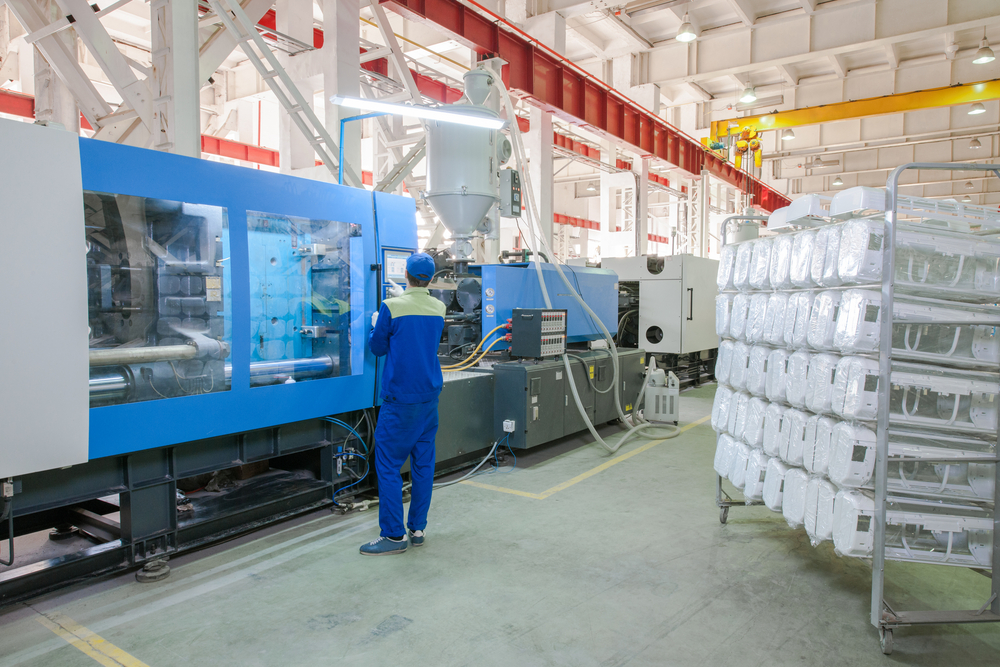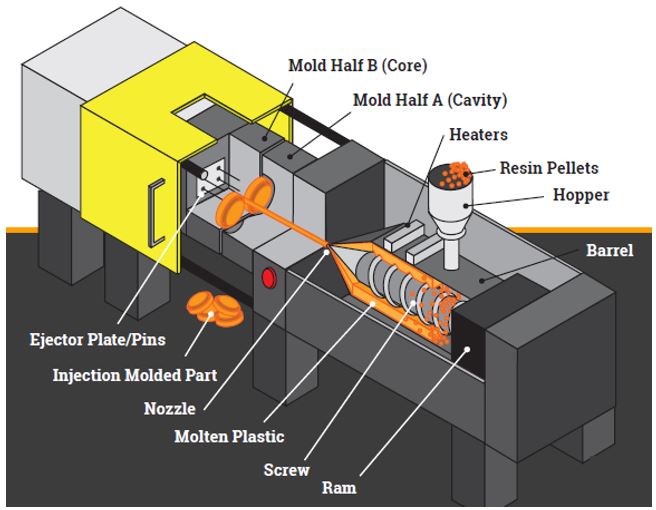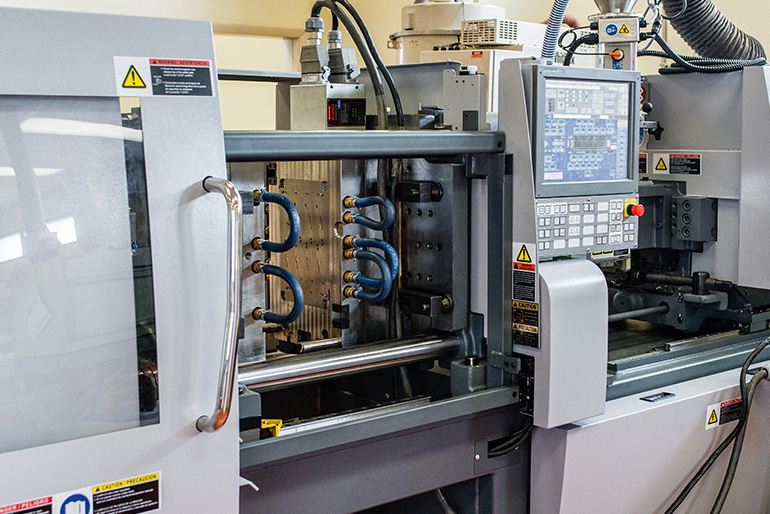The Influence of Plastic Injection Molding on Minimizing Manufacturing Expenses and Waste
The Influence of Plastic Injection Molding on Minimizing Manufacturing Expenses and Waste
Blog Article
Understanding the Basics of Plastic Shot Molding Procedures
Plastic shot molding works as a foundation of contemporary manufacturing, offering a systematic method to generating complex parts with accuracy. This procedure not only incorporates the basic actions of melting and injecting materials right into mold and mildews however likewise includes a nuanced understanding of various affecting factors, such as temperature level and stress. As markets significantly demand performance and quality, the ins and outs of this technique end up being a lot more important. Exploring these essential elements might expose just how even small modifications can result in significant improvements in manufacturing end results, elevating concerns regarding the possibility for innovation in this recognized procedure.
What Is Plastic Shot Molding?
Plastic shot molding is a widely used manufacturing procedure that changes thermoplastic and thermosetting products into specific and complicated shapes. This method is preferred for its capacity to generate high volumes of the same components with extraordinary accuracy, making it an indispensable technique in numerous markets, consisting of auto, consumer products, and medical devices.
The procedure includes thawing the selected plastic product and infusing it into a mold and mildew under high stress. The mold, developed to the specs of the desired component, permits the molten plastic to form as it strengthens and cools. As soon as the material has hardened, the mold is opened up, and the finished element is expelled.
Plastic shot molding uses several benefits, including minimized waste, consistency in manufacturing, and the ability to incorporate intricate styles that might be testing with other manufacturing methods. In addition, it supports a broad variety of products, each supplying distinct homes that can be tailored for particular applications. As markets remain to innovate, plastic injection molding remains at the forefront, enabling the advancement of advanced products that fulfill advancing customer needs.
The Shot Molding Process
The injection molding procedure is a sophisticated method that includes numerous vital phases to produce top notch plastic parts. Initially, plastic pellets are fed into a heated barrel where they are melted into a viscous liquid. This molten plastic is after that infused under high pressure into a precision-engineered mold, which forms the material right into the preferred kind.
When the mold is filled up, the plastic is enabled to cool down and solidify, taking the shape of the mold cavity. Cooling time is crucial, as it influences the cycle time and the last residential or commercial properties of the shaped part. After sufficient air conditioning, the mold and mildew opens, and the ended up component is expelled making use of ejector pins.

Materials Utilized in Shot Molding
Numerous products can be used in the shot molding process, each offering one-of-a-kind buildings that satisfy specific applications. One of the most generally used products consist of thermoplastics, thermosetting plastics, and elastomers.

Thermosetting plastics, like epoxy and phenolic materials, undertake a chemical change throughout the healing procedure, resulting in a rigid, inflexible structure. These materials are suitable for applications requiring high heat resistance and structural honesty, typically used in automobile components and electric insulators.
Elastomers, consisting of silicone and rubber-based materials, supply adaptability and durability. Their special residential properties make them suitable for applications that require elasticity, such as seals and gaskets.
Additionally, specialty products like bio-based plastics and composites are obtaining traction for their ecological advantages and boosted performance qualities, broadening the extent of shot molding applications in numerous markets. Recognizing the homes of these materials is critical for choosing the ideal type for details projects.
Benefits of Injection Molding
Injection molding stands out as a very reliable manufacturing procedure that uses countless benefits for generating intricate components with precision. One of the most considerable benefits is the ability to produce detailed styles that would certainly be impossible or challenging to accomplish with other methods (Plastic Injection Molding). The process permits limited resistances and comprehensive features, making certain premium elements
In addition, injection molding is recognized for its quick manufacturing capabilities, making it a perfect option for high-volume production. Once the mold and mildew is created, parts can be produced rapidly, lowering lead times and increasing total efficiency. This efficiency not only decreases production costs yet additionally gives a competitive edge out there.
The adaptability of products utilized in injection molding even more enhances its allure. A vast array of thermoplastics and thermosetting polymers can be used, enabling manufacturers to pick materials that finest fulfill their particular demands, consisting of strength, heat, and adaptability resistance.
In addition, the procedure reduces waste, as excess product can typically be reused have a peek at this website and recycled. This sustainability aspect adds to a decreased ecological influence, making injection molding a responsible production choice. On the whole, the advantages of injection molding make it a recommended approach for numerous markets.
Elements Influencing Product Top Quality
While various variables can affect item high quality in injection molding, comprehending these components is important for achieving optimal results. Trick facets include material choice, refining parameters, and mold and mildew design.
Material choice plays an essential role, as different polymers display special homes that influence flowability, stamina, and thermal security. Poor material selection can lead to problems such as bending or incomplete filling.
Processing criteria, including pressure, temperature, and cycle time, must be carefully controlled. Variants in these settings can result in disparities partly dimensions and surface coating. Exceedingly high temperature levels may create destruction of the polymer, while insufficient pressure can result in short shots.
Mold design is just as important, as it determines the flow of the molten plastic and the cooling procedure. Poorly created mold and mildews might cause uneven air conditioning rates, causing dimensional errors and recurring stresses.

Conclusion
To conclude, plastic shot molding acts as an important production procedure that allows the efficient manufacturing of premium parts. Proficiency of the shot molding process, including the understanding of materials and the impact of different aspects on product high quality, is crucial for accomplishing ideal results. The benefits of this technique, such as cost-effectiveness and design flexibility, more emphasize its relevance across several industries, solidifying its status as a favored selection for high-volume manufacturing.
Plastic injection molding offers my latest blog post as a keystone of modern manufacturing, providing a methodical approach to generating intricate parts with precision.Plastic shot molding provides a number of benefits, including minimized waste, consistency in production, and the capacity to incorporate elaborate layouts that might be testing with other producing techniques (Plastic Injection Molding). As markets continue to innovate, plastic injection molding remains at the leading edge, making it possible for the advancement of advanced items that satisfy evolving customer demands
The shot molding process is an advanced strategy that entails numerous key stages to generate top quality plastic components.In conclusion, plastic shot molding you could try this out offers as a crucial production process that allows the effective manufacturing of high-grade components.
Report this page